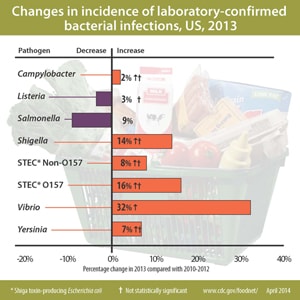No nutrition in medical education? An old story that might be changing.
JAMA Internal Medicine invited me to comment on an article about the lack of nutrition education in medical schools. This was written by Nathanial Morris, a second-year medical student at Harvard, who complains about the paucity of nutrition instruction in his curriculum.
Yet the course spanned just 3 afternoons, for a total of 9 hours of instruction…The course directors told us it would be the only time for dedicated nutrition education during our 4 years as medical students. There were no examinations nor interactions with patients. The 1 lecture on obesity lasted 45 minutes…As a medical student, I cannot fathom why medical schools continue to neglect nutrition education.
When I read his article, I didn’t know whether to laugh or cry. I wrote almost identical articles in the 1980s based on my experience at UCSF (here’s one).
I asked a former UCSF colleague, Dr. Robert Baron, to co-author the commentary with me: Nutrition in Medical Education: From Counting Hours to Measuring Competence.
Our interest in this issue started nearly 40 years ago, when we were both at the University of California, San Francisco (UCSF), School of Medicine. In 1976, one of us (R.B.B.) was, like Mr Morris, a medical student advocating for nutrition instruction, while the other (M.N.) was a lecturer newly recruited to provide that instruction. For the next decade, we worked together to create “NutritionUCSF,” a comprehensive program of nutrition training that at its peak encompassed 16 hours of preclinical instruction; regular lectures and ward rounds in several clinical rotations; an intensive, 1-month fourth-year clinical elective; an ongoing lecture series for the health professions community; and postgraduate continuing education courses.
In addition to our youthful interest and enthusiasm, we were able to achieve all this for a simple reason: we had funding. Funding came first from a curriculum development grant from the Health Resources Administration and later from a private foundation. These grants allowed us to pay faculty for a small portion of their time and leverage nutrition hours into the curriculum.
Our article explains how at UCSF and some other institutions, nutrition instruction is becoming integrated into overall reform of medical education:
Today’s medical education reform movement must respond to this call by including a broad competency-based approach to improving the nutrition-related skills of physicians. When it does, we may finally have the opportunity to include advice about healthful eating as a routine part of 21st century medical practice.
Some help from Congress?
It is interesting in this context that various members of Congress are introducing bills to improve nutrition education for medical professionals, for example, the EAT for Health Act and the ENRICH Act. Thanks to Jamie Berger for alerting me to this legislation and for sending some fact sheets about the bills: EAT for Health / ENRICH.
It’s been nearly 40 years since my involvement in this issue. Ever optimistic, I’m happy to see some progress at last.
And this just in.
The current issue of the American Journal of Clinical Nutrition has papers from a symposium on nutrition in medical education. The first was in 1962, so the half-century saga continues.
- Title page, program participants, and TOC: Am J Clin Nutr 2014;99 1145S-1149S
- Introduction to Nutrition Education in Training Medical and Other Health Care Professionals. Penny M Kris-Etherton, Charlotte A Pratt, Edward Saltzman, and Linda Van Horn. Am J Clin Nutr 2014;99 1151S-1152S
- The need to advance nutrition education in the training of health care professionals and recommended research to evaluate implementation and effectiveness. Penny M Kris-Etherton, Sharon R Akabas, Connie W Bales, Bruce Bistrian, Lynne Braun, Marilyn S Edwards, Celia Laur, Carine M Lenders, Matthew D Levy, Carole A Palmer, Charlotte A Pratt, Sumantra Ray, Cheryl L Rock, Edward Saltzman, Douglas L Seidner, and Linda Van Horn. Am J Clin Nutr 2014;99 1153S-1166S
- Nutrition education in medical school: a time of opportunity. Robert F Kushner, Linda Van Horn, Cheryl L Rock, Marilyn S Edwards, Connie W Bales, Martin Kohlmeier, and Sharon R Akabas. Am J Clin Nutr 2014;99 1167S-1173S
- Residency and specialties training in nutrition: a call for action. Carine M Lenders, Darwin D Deen, Bruce Bistrian, Marilyn S Edwards, Douglas L Seidner, M Molly McMahon, Martin Kohlmeier, and Nancy F Krebs. Am J Clin Nutr 2014;99 1174S-1183S
- Challenges and opportunities for nutrition education and training in the health care professions: intraprofessional and interprofessional call to action. Rose Ann DiMaria-Ghalili, Jay M Mirtallo, Brian W Tobin, Lisa Hark, Linda Van Horn, and Carole A Palmer. Am J Clin Nutr 2014;99 1184S-1193S
- Policy approach to nutrition and physical activity education in health care professional training. Matthew D Levy, Lisel Loy, and Laura Y Zatz. Am J Clin Nutr 2014;99 1194S-1201S.




